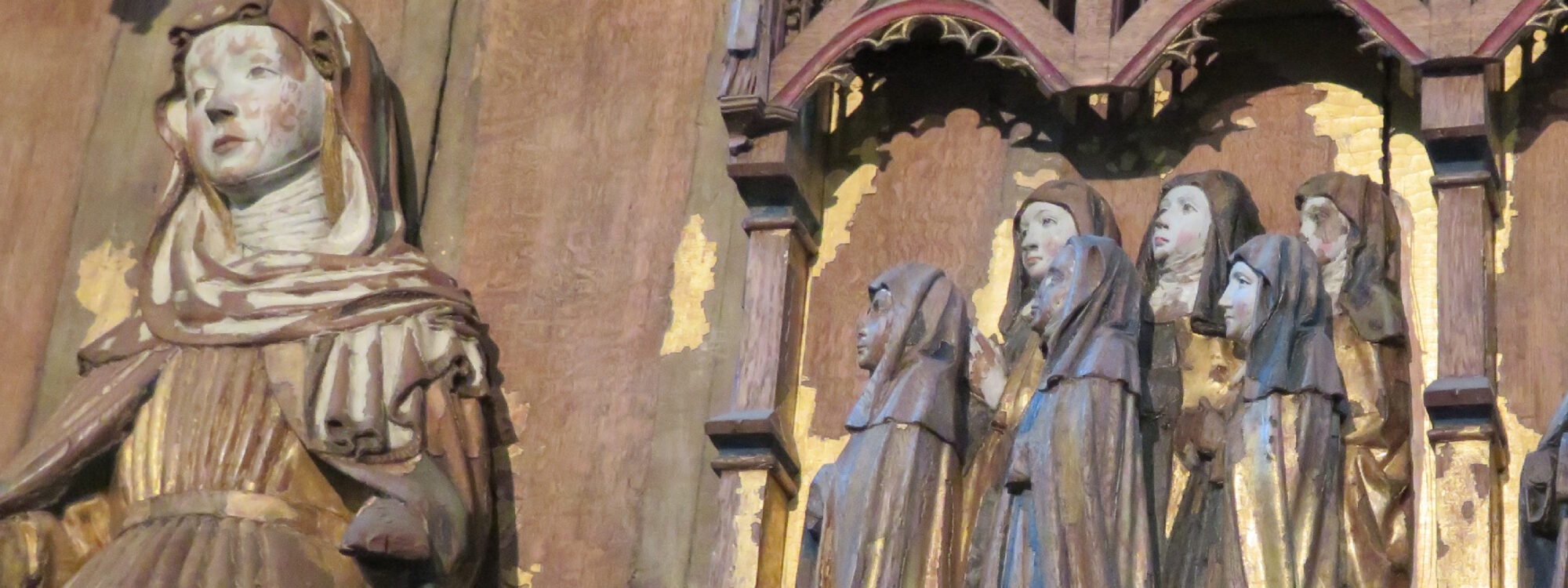Lived Remembrance around Female Monasteries
Lived Remembrance around Female Monasteries in Late Medieval Sweden
Anna-Stina Hägglund is a postdoctoral researcher at the Centre for Medieval and Early Modern Studies (TUCEMEMS) at the University of Turku. Her research focuses on late medieval lived religion, memory culture, and donations to female religious communities in Northern Europe. She earned her PhD in Nordic History from Åbo Akademi University in 2022 and is also part of the research team for the project Lived Religion in Medieval Finland (2021–2024) at the University of Tampere.
The project Lived Remembrance around Female Religious Houses in the Swedish Kingdom, 1350-1520 (2024–2026) (Levd minneskultur kring kvinnokloster i det svenska riket 1350-1520) is a three-year postdoctoral initiative funded by the Swedish Literature Society in Finland (Svenska Litteratursällskapet). The project investigates the connections between benefactors and female monastic communities, primarily through pious donations and last wills made by laypeople.
Monasteries played a crucial role in the memory culture of medieval society and can be seen as sites of memory. A substantial element in this memory culture were the pious donations that were given to monastic communities by individuals who wished to ensure that both they and their deceased ancestors would be remembered in the daily prayers of the monastic community. The research focuses on women’s lived memory culture in the Province of Uppsala, the area comprising the Swedish kingdom. By concentrating on female monastic communities, women’s agency as both donors and members of these communities is the main focus. These monasteries are studied as sites of memory using the concept of lived religion, which offers a fresh perspective on the relationships between donors and monastic institutions. Women are a vital subject of study because, although previous research has emphasized their important roles in memory culture—fulfilling societal expectations as wives, mothers, and daughters—lived religion as a method shines a light on their actions and provides new insights into women’s active participation in the memory culture of their time.
Special interest lies on how benefactors who supported female monastic communities expressed their wishes to be remembered in the prayers of individual sisters, or how they sought to ensure that their memory would be preserved within the wider monastic community. An important source for this study is the last wills, which endowed various religious institutions and allow for an examination of female monastic communities within a broader context. From the perspective of the nuns, the manner of their prayers for benefactors and the ways in which they maintained their own remembrance networks are explored.
The project encompasses all female monastic communities across different orders established within the Swedish kingdom. However, particular attention is given to the two Birgittine communities at Vadstena and Nådendal. These communities were new foundations in the monastic landscape and represented the only monastic order, the Order of the Most Holy Saviour (or in short the Birgittine Order), founded in Northern Europe. The strong support these two monasteries received from the political elite has resulted in the preservation of an extensive body of source, which provides a good opportunity to study them in a context of memory culture.

